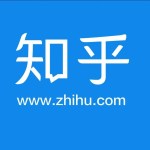How-to & Go-to Guides of All Things Around China.
China’s coffee giants, Luckin Coffee and Cotti Coffee, are locked in a high-stakes battle for global dominance. Both brands emerged from China’s hyper-competitive domestic market, but their overseas strategies and performance diverge sharply. As they eye Southeast Asia, North America, and beyond, here’s a deep dive into their contrasting approaches and results.
1. Strategic Blueprint: Market Entry & Expansion Models
Luckin Coffee: Gradual and Targeted
Luckin’s overseas journey began cautiously, with Singapore as its test case. Since opening its first store there in April 2023, Luckin has expanded to 51 stores in Singapore by 2025, focusing on high-traffic areas like malls and transit hubs . The brand adopted a franchise model for Malaysia, partnering with local conglomerate Hextar Industries to open 200 stores over three years . In the U.S., Luckin is set to debut in New York’s Broadway district, targeting Chinese students and tourists .
Key differentiators:
- Premium positioning: Luckin charges 6–8.5 SGD (USD 4.40–6.20) per drink in Singapore, positioning itself above local competitors like Toast Box but below Starbucks .
- Supply chain resilience: By sourcing beans from Brazil, Indonesia, and China’s Yunnan province, Luckin aims to stabilize costs. Its partnership with Indonesia’s Banggai Islands for coconut supply further strengthens regional logistics .
Cotti Coffee: Blitzkrieg Expansion
Cotti’s strategy is defined by speed and affordability. By October 2024, it had already reached 10,000 stores across 28 countries, with over 25% overseas . Southeast Asia is a key battleground: in Thailand, Cotti sells 55 THB (USD 1.60) Americanos, undercutting Black Canyon Coffee, while in South Korea, Gangnam stores blend affordability with trendy aesthetics .
Key differentiators:
- No-fee franchise model: Cotti waives upfront fees, instead taking a 0–30% revenue share based on sales tiers. This low-risk approach attracted 50+ partners with 100,000+ existing stores in 2024 .
- Convenience store integration: Cotti embeds outlets in retail spaces (e.g., supermarkets, gas stations), aiming for 100-meter accessibility and reduced overheads .
2. Performance Metrics: Growth & Profitability
Luckin: Steady but Selective
- Store count: 22,340 global stores by 2024, with overseas locations concentrated in Singapore (51) and Malaysia (launching in 2025) .
- Revenue: 2024 global revenue hit USD 4.79 billion, but overseas contribution remains undisclosed. Singapore stores achieve positive cash flow within 6 months, driven by high foot traffic and premium pricing .
- Challenges: Luckin faces intense competition in Malaysia, where local chains like ZUS Coffee (586 stores) dominate with prices as low as RM 8 (USD 1.80) .
Cotti: Scaling at Breakneck Speed
- Store count: 10,000 global stores by late 2024, targeting 50,000 by 2025. Over 3,000 of these are in Southeast Asia, including 11 in Malaysia and 20+ in Thailand .
- Profitability: 97% of Cotti stores turned profitable in 2024, with a closure rate of just 3.6%. Its vertically integrated supply chain (45,000-ton annual coffee roasting capacity) ensures cost efficiency even at rock-bottom prices .
- Criticisms: Aggressive expansion risks over-saturation. In Thailand, Cotti’s low prices (USD 1.60) have drawn backlash from local cafes, while halal certification delays hindered progress in Muslim-majority markets .
3. Market Positioning: Localization & Consumer Appeal
Luckin: Tech-Driven Sophistication
- Product localization: In Singapore, Luckin 推出 matcha latte and durian-flavored coffee, blending Western and Asian tastes. Its app-driven ordering system and loyalty programs replicate the seamless experience familiar to Chinese consumers .
- Target audience: Luckin caters to urban professionals and tourists, leveraging prime locations and premium packaging to build brand equity.
Cotti: Pop Culture & Accessibility
- Trendy collaborations: Cotti’s Pampas Blue Latte (a TikTok sensation) and partnerships with Argentine football star Lionel Messi appeal to younger demographics .
- Price wars: By undercutting competitors (e.g., USD 1.24 lattes in Thailand), Cotti targets price-sensitive consumers and budget-conscious travelers .
4. Supply Chain & Cost Management
Luckin: Global Sourcing with Regional Anchors
- Multi-country partnerships: Luckin sources beans from Brazil, Ethiopia, and Yunnan, while its Indonesian coconut supply chain reduces dependency on imported ingredients .
- Cost optimization: After initial teething problems, Singapore’s 物料成本 has dropped to 1.1x China’s levels, thanks to centralized procurement and local supplier partnerships .
Cotti: Hyper-Integrated & Low-Cost
- Vertical control: Cotti’s Anhui-based global supply chain hub handles roasting, packaging, and distribution, enabling USD 1.60 lattes even as global coffee prices fluctuate .
- Robotic efficiency: AI-driven inventory systems and automated coffee machines reduce labor costs by 20%, critical for maintaining profitability at scale .
5. Challenges & Risks
Luckin: Balancing Growth and Brand Equity
- Competition: In Malaysia, Luckin must compete with ZUS Coffee (RM 8 lattes) and Starbucks (408 stores). Its premium pricing risks alienating price-sensitive locals .
- Regulatory hurdles: Halal certification delays in Malaysia and Indonesia have slowed expansion, while U.S. stores face scrutiny over food safety standards .
Cotti: Managing Hyper-Growth
- Overextension: With 40,000 new stores planned for 2025, Cotti risks operational burnout. Its reliance on partner outlets (e.g., convenience stores) could compromise quality control .
- Cultural missteps: In Thailand, Cotti’s aggressive marketing clashed with local norms, while its focus on Chinese tourists in Japan and South Korea limits long-term growth .
7. Conclusion: The Road Ahead
- Luckin’s edge: Strong brand recognition, premium positioning, and tech-driven operations make it a contender in mature markets. Its focus on profitability over speed could pay off in the long run.
- Cotti’s gamble: Aggressive pricing and hyper-localization are winning market share in emerging economies, but scalability and quality control remain critical.
For investors, Luckin offers stability in established markets, while Cotti presents high-risk, high-reward opportunities in growth regions. As both brands race to dominate the global coffee landscape, their strategies will shape the future of Chinese consumer brands abroad. ☕🌍
Stay tuned for our next deep dive into China’s dynamic consumer economy!








